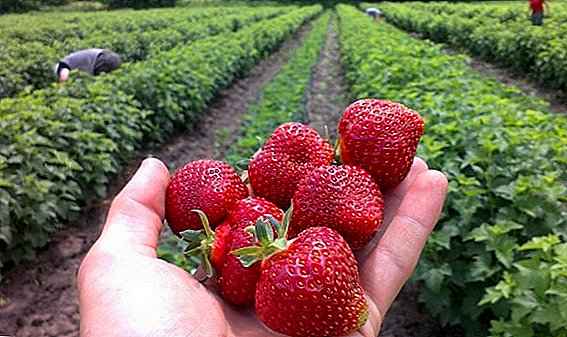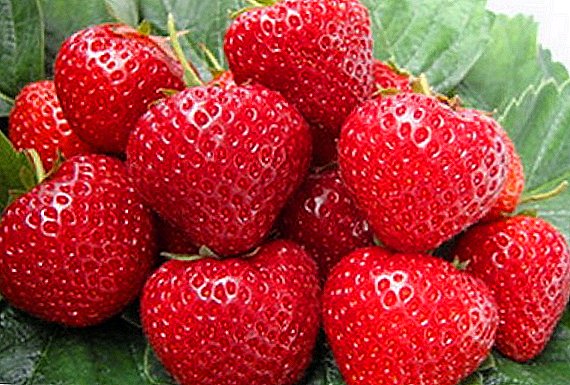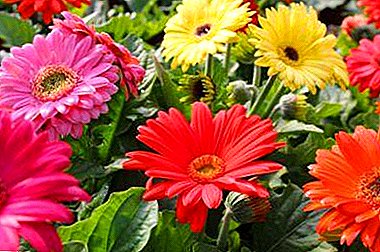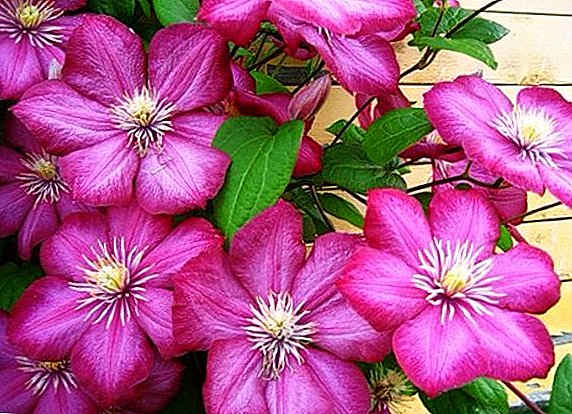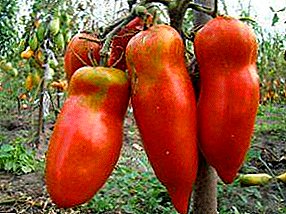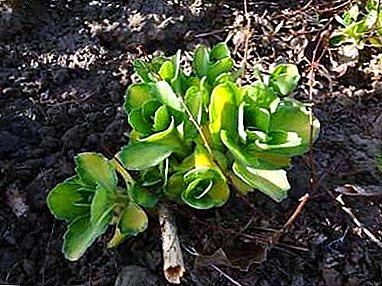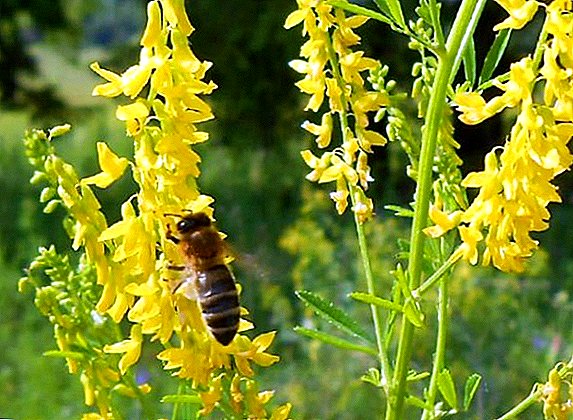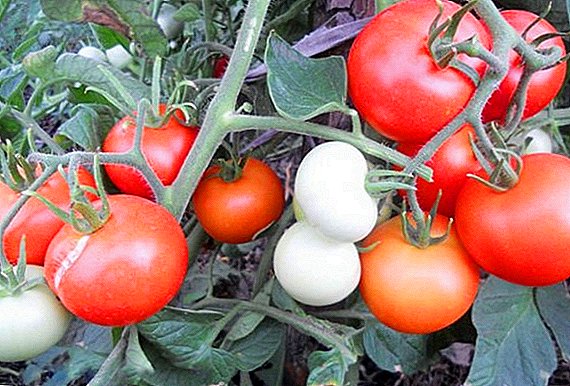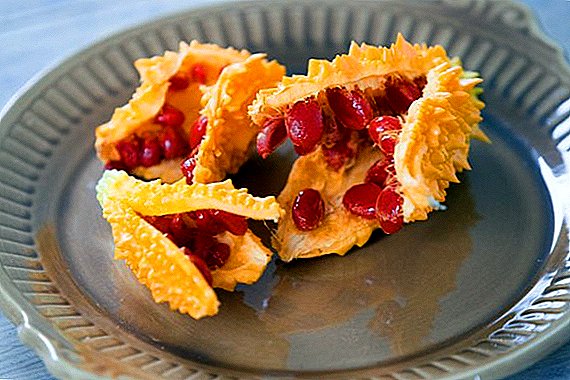 Momordica, or as it is also called Indian pomegranate, bitter gourd, rabid or Indian cucumber, Chinese melon, is a grassy vine of the pumpkin family. Homeland of this plant is India and China. There are one-and perennial types of plants. In total, there are almost 20 species of momordica.
Momordica, or as it is also called Indian pomegranate, bitter gourd, rabid or Indian cucumber, Chinese melon, is a grassy vine of the pumpkin family. Homeland of this plant is India and China. There are one-and perennial types of plants. In total, there are almost 20 species of momordica.
Momordica is a rather exotic plant in our area, but practice has shown that it can quite successfully grow and bear fruit in the garden or dacha. Fruits, seeds, leaves and even shoots of this vine are suitable for food. Creeper shoots are thin and durable, about 2-4 meters in length, the leaves are carved, bright green in color. Momordica flowers are opposite-sex - the male flower is yellow, large, located on a long pedicle, the female flower has a smaller size and a short pedicle.
 Fruits in length reach 10-25 cm, diameter - about 6 cm, color changes from green to orange depending on the degree of maturity. The flesh of the fruit is red juicy, has a pleasant taste. Seeds of dark shades are covered with a dense shell, similar to pomegranate seeds. One fruit of Momordica produces approximately 30 seeds.
Fruits in length reach 10-25 cm, diameter - about 6 cm, color changes from green to orange depending on the degree of maturity. The flesh of the fruit is red juicy, has a pleasant taste. Seeds of dark shades are covered with a dense shell, similar to pomegranate seeds. One fruit of Momordica produces approximately 30 seeds.
Important! You can get rid of staphylococci and streptococci using momordika extract.
Chemical composition and calorie momordiki
The caloric content of momordica is only 15 kcal per 100 g of the product, while the fat content is 0.1 g, carbohydrates - 3 g, proteins - 0.8 g, water - 90 g
The composition of the fruit momordiki includes many nutrients: vitamins A, B, E, F, C, PP, as well as organic acids, flavonoids, amino acids and alkaloids. The seeds were found oil and momorditsin - alkaloid. Vine root contains triterpene saponin.
All ground and underground parts of Momordica have a healing effect, which we describe below.
Healing properties of momordiki
 Scientists have recently begun a deep study of momordica and have already revealed some of its medicinal properties, but clinical trials are being conducted further, and it is possible that soon there will be new information about the medicinal plant.
Scientists have recently begun a deep study of momordica and have already revealed some of its medicinal properties, but clinical trials are being conducted further, and it is possible that soon there will be new information about the medicinal plant.
Momordica seeds have the ability to relieve swelling, and also have antiseptic, anti-inflammatory and antifebrile properties. These berries, seeds can improve eyesight and overall eye condition.
Did you know? From Latin, the name Momordica literally translates as "bite", since the young plant "stings" the skin like nettle.
Fruits of the plant unique, they inhibit the growth of cancer cells. Momordica extracts have a positive effect on the treatment of sarcomas, leukemia and melanomas. Momordica can heal from hepatitis, liver cancer, advanced cases of infectious diseases, improves pancreatic activity, removes toxins from the body and improves its immunity, and also helps maintain the health of diabetic patients by adjusting the chemical composition of blood.
Drugs cells are restored from this liana, with diseases of the gastrointestinal tract and the central nervous system have a beneficial effect.
Preparation and storage of medical raw materials from momordiki
 Use the useful properties of momordiki for treatment can year-round, for this it is necessary to stock up on time the medicinal raw materials of this healing vine. Leaves it is better to harvest in late spring, then the concentration of nutrients in them will be maximum, fruits and seeds - after the final maturation in the summer, and the roots - in the fall.
Use the useful properties of momordiki for treatment can year-round, for this it is necessary to stock up on time the medicinal raw materials of this healing vine. Leaves it is better to harvest in late spring, then the concentration of nutrients in them will be maximum, fruits and seeds - after the final maturation in the summer, and the roots - in the fall.
The fruit and root are pre-cut into small pieces, and the seeds, shoots and leaves are first dried and the dried ones are crushed. Dry the raw materials in a darkened room with good ventilation. The dried fruits of momordiki retain their healing properties for 3-4 years, the roots - 2-3 years, and the leaves and flowers - for 1-2 years. Store dry raw materials in an airtight glass container or in cloth bags.
Important! Substances that are part of momordiki, can speed up the metabolism, so its fruits are used for weight loss.
Recipes for the use of momordiki in traditional medicine
 An exotic plant can help a person to cure many diseases, the main thing at the same time - not to exceed the therapeutic dose.
An exotic plant can help a person to cure many diseases, the main thing at the same time - not to exceed the therapeutic dose.
Momordica can cure colds and the flu; tincture on vodka: the glass container is filled with the pulp of fruits cut into small cubes, poured with vodka to the top and insist 10-15 days in a dark place. Take tincture 1 tsp. 30 minutes before meals 3-4 days.
Momordica seed decoction they treat hemorrhoids, prostatitis, sclerosis, fever, and also it is used to obtain a diuretic effect. Pieces of 20 seeds are crushed, poured a glass of boiling water and boil on low heat for 10 minutes. Insist a few hours, filter and use 50 ml 3-4 times a day.
Chewing 3-4 seeds of momordica before eating for 10 days will relieve intestinal and stomach diseases.
Using momordiki root for bronchitis, it is possible to alleviate the course of the disease, since it has expectorant properties. ORZ will be faster if carried out inhalation with leaves and shoots momordiki. Decoctions stalks and leaves will relieve arthritis pain. Fresh flesh the fetus will relieve itching and swelling after insect bites.
The use of momordiki in cosmetology
 Asian women have long used momordika for cosmetic purposes. Various decoctions, infusions and creams, which include this marvelous plant, improve skin condition, nourish it with vitamins and oils, and also smooth wrinkles, as a result, the face will look younger and fresher.
Asian women have long used momordika for cosmetic purposes. Various decoctions, infusions and creams, which include this marvelous plant, improve skin condition, nourish it with vitamins and oils, and also smooth wrinkles, as a result, the face will look younger and fresher.
Decoction leaves get rid of prickly heat and various skin rashes. The juice momordiki used for skin diseases, for this, the bandage is soaked with juice and applied to the affected area several times a day. Decoction leaves and shoots will accelerate the healing of the burn and reduce the likelihood of a scar. With regular use of fresh leaves, the overall condition of the skin will improve, it will become more velvety to the touch.
Did you know? The fruits of momordiki in the Middle Ages were eaten only by members of the imperial families of ancient China.
Cooking Uses
Seeds of unripe momordiki are poisonous, they can be eaten after full ripening, when they become sweet. The fruits of momordiki collected in immature form. The pulp of the fetus is watery, resembles cucumber in taste, it is eaten in an immature state. When ripe, the fruit becomes soft and changes color to orange, while it becomes bitter in taste. You can remove the bitterness from the ripe fruit by soaking it in salt water for 3-4 hours, after which it is ready for cooking or stewing.
 Small fruits canned for future use. Flowers, leaves and young stems stew and eat. Ground parts of lianas are added to meat, potato dishes and various salads. Seeds and sliced fruit after roasting are added to soups and borscht, stews and salads, as well as in sour-milk products instead of fruit. The taste of momordica is well combined with legumes.
Small fruits canned for future use. Flowers, leaves and young stems stew and eat. Ground parts of lianas are added to meat, potato dishes and various salads. Seeds and sliced fruit after roasting are added to soups and borscht, stews and salads, as well as in sour-milk products instead of fruit. The taste of momordica is well combined with legumes.
Contraindications
The use of momordiki is prohibited for pregnant and lactating women, children and people who have thyroid disease or there is an individual intolerance to this plant. Seeds should be consumed in limited quantities to avoid poisoning and fever. Caution should be used momordika with diseases of the digestive tract, there may be exacerbations.


